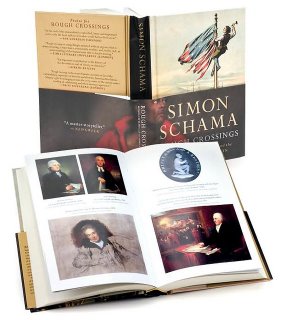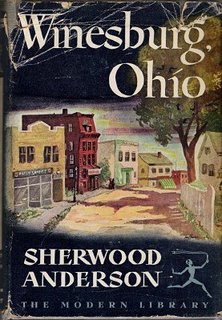Aunt Safiyya and the Monastery by Bahaa' Taher
 This is a novel of transitions and conflicts. It is set in a small village where everyone is a farmer; all are Muslim, traditional and related to each other. The village is just outside of Luxor in Upper Egypt. (If the designations Upper and Lower Egypt confound you, think of “upper” as closer to the source of the Nile and “lower” as near the mouth.) Not far from the village, up against the mountains in the desert is a Coptic Christian monastery. The time of the novel’s main action (which is looked back on by the narrator in his later life) is the time of the 1967 war in which Israel overran the Sinai Peninsula and totally humiliated the Egyptian military. The monks and the villagers are on good terms; though they share different religious traditions, they are all Egyptians.
This is a novel of transitions and conflicts. It is set in a small village where everyone is a farmer; all are Muslim, traditional and related to each other. The village is just outside of Luxor in Upper Egypt. (If the designations Upper and Lower Egypt confound you, think of “upper” as closer to the source of the Nile and “lower” as near the mouth.) Not far from the village, up against the mountains in the desert is a Coptic Christian monastery. The time of the novel’s main action (which is looked back on by the narrator in his later life) is the time of the 1967 war in which Israel overran the Sinai Peninsula and totally humiliated the Egyptian military. The monks and the villagers are on good terms; though they share different religious traditions, they are all Egyptians.As the novel begins, the narrator is looking back on his boyhood when he used to be the one designated to take cookies to the monastery for the holidays, when he’d get a chance to spend some time with Bishai who was the friendliest of the monks and who seemed to function in somewhat of a caretaker role. He was also probably somewhat simple because his conversation didn’t always make sense. Though some villagers were afraid the monks were casting an evil eye on their fields, the boy’s father, among the most respected and educated in the village, said that Bishai had much wisdom with regard to farming in the region and always listened to him. The boy enjoys Bishai’s company enormously. He also delivers sweets to relatives, including Aunt Safiyya, carefully following his mother’s instructions not to greet her or to wish her happy holidays but to say the sweets are for Hassan. The reader’s curiosity is aroused.
The narrator then tells the story of Safiyya, who was raised with him as an elder sister though in fact she was a cousin of some sort who lost her parents. Safiyya was beautiful and when she was very young, men began to ask for her hand in marriage. The family however had an unstated “understanding” that Harbi, a handsome young cousin, would marry Safiyya. As readers we have no insight into what Safiyya and Harbi thought of this plan. But as Safiyya got older, her marriage became more of a concern since the 3 younger daughters could not marry until the eldest was taken care of. Harbi does not speak, but finally the richest man in the village, the bey (an honorific title) who’s already outlasted two wives, asks for her hand. The family consults Safiyya, sort of expecting her to reject the old man, but she immediately agrees, is married to the Bey and moves with him to a fancy house in Luxor where very soon a son, Hassan. is born.
There are rumors in the village, the exact nature of which the reader must imagine. The Bey confronts Harbi, whom previously he had treated in a very friendly manner, trying to drive him out of town. He will not explain his grievance. Harbi has heard the talk but will neither defend himself nor go quietly. The Bey’s henchmen tie Harbi to a palm tree and torture him. The Bey becomes so angry he wants them to hill him, but the men run off, saying they will not murder for that is a sin. There is a tussle. Harbi is crazed with pain and he grabs a rifle to defend himself and kills the Bey. No one explains what this is all about.
Safiyya does not mourn but moves out of the fancy new house and back to the village where she refuses to hold a funeral for her husband until her son grows up to avenge his father’s death. The monks and more educated villagers like the boy’s father have worked in the village to settle differences without resorting to blood feuds and vengeance, but Safiyya is impervious to anyone’s input. She is educating her son from babyhood to kill Harbi who, after his health is broken in prison is given a compassionate release and, at the father’s suggestion, moves into a hut on the monastery grounds near Bishai. Villagers visit him there regularly to Safiyya’s consternation. Even an outlaw gang, whose leader Harbi knew in prison, visits regularly.
Gradually the reader sees not only the agony of the traditional revenge cycle that threatens the community, but the tensions between the monastery and the village, between the village and the “modern world” of Luxor where tourists swarm to see the ancient monuments, as well as the tensions between the old ways and the new. At the beginning of the story transportation is by horse drawn vehicle; at the end by motor car. At the beginning, both the monks and the villagers love and tolerate Bishai who’s not quite normal, but at the end he’s driven off to a mental hospital instead of being allowed to end his days in his hut on the monastery grounds, driven off at least in some dignity in the old horse drawn carriage. The monks are also no longer local men and are more serious scholars who ignore the village. Other old versus new tensions involve that between the current changing society and the ancient one that makes the area so attractive to tourists from all over the world as well as the tension between Egypt and its Arab neighbors when the Sinai is given back by Israeli as a result of a treaty negotiated by the US. There’s even the tension resulting from increasing crime (we contrast the honorable thieves who visit Harbi at the monastery with growing crime in Upper Egypt).
It’s a gem of a novel and a valuable glimpse into a changing traditional society.





